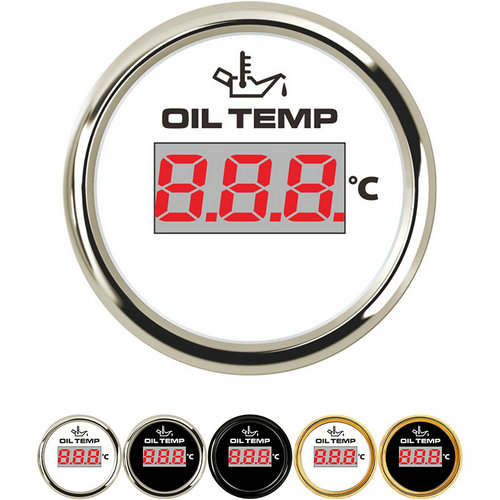oil temp gauge reading low
1. Thermostat failure:
The function of the thermostat is to automatically change the flow and circulation route of the coolant according to the engine load and water temperature, so as to ensure that the engine works at a suitable temperature. When the thermostat is closed, the cooling water does not flow through the radiator, the water flow path is short, and the heat dissipation intensity is small, which is called a small cycle of the water cooling system. At this time, the engine can heat up quickly; when the thermostat is opened, the cooling water flows through The radiator has a long water flow path and high heat dissipation intensity, which is called a large cycle of the water cooling system. At this time, the temperature of the engine rises slowly.If the thermostat fails, it is always on or opened too early, the cooling system is always in a large cycle or the large cycle is turned on early, the engine temperature is not easy to rise, and the engine is overcooled.
2. Cooling fan failure:
The function of the car cooling fan is to let more air flow through the radiator, enhance the heat dissipation capacity of the radiator, and accelerate the cooling speed of the coolant. In passenger cars, the cooling fans are generally electric, and the speed can be adjusted, or the two fans are started sequentially. Generally, the engine control unit controls its start, stop and speed. It does not start when the engine temperature is low, and starts when the engine exceeds normal temperature. The higher the temperature, the faster the speed, or it starts when the temperature is low. One, both start when the temperature is higher. If for some reason, such as thermostat failure, engine control unit failure, wiring failure, etc., the cooling fan keeps running after the engine starts, or runs at the highest speed as long as it starts, or both fans start at the same time, the engine It will overcool, resulting in super cooling.
3. Blind failure:
The function of the louvers is to adjust the air flow through the radiator. When it is opened, the air can flow through the radiator completely, and the heat dissipation intensity is high; when it is closed, the air cannot flow through the radiator, and the heat dissipation intensity is low. Today's cars rarely use shutters to adjust the cooling intensity of the engine, but some models are also using them, and they are becoming more and more intelligent.
4. Water temperature sensor failure:
The water temperature sensor is used to detect the temperature of the engine coolant, and convert the temperature signal into an electrical signal and send it to the engine control unit (ECU), as the main correction signal for gasoline injection, ignition timing, idle speed and exhaust emission control. If it detects a lower temperature than the actual temperature due to some fault, the instrument panel will also display a low engine water temperature fault.But this is a false fault. Although the indicated temperature is low, the temperature of the engine is actually not low. If we directly measure the coolant temperature with a thermometer, we will get the correct answer. But in this case, because it cannot provide the correct signal to the engine control unit, the engine still injects fuel according to the low temperature state, and the car will have high fuel consumption.
 English
English 



Get a Quote / Info